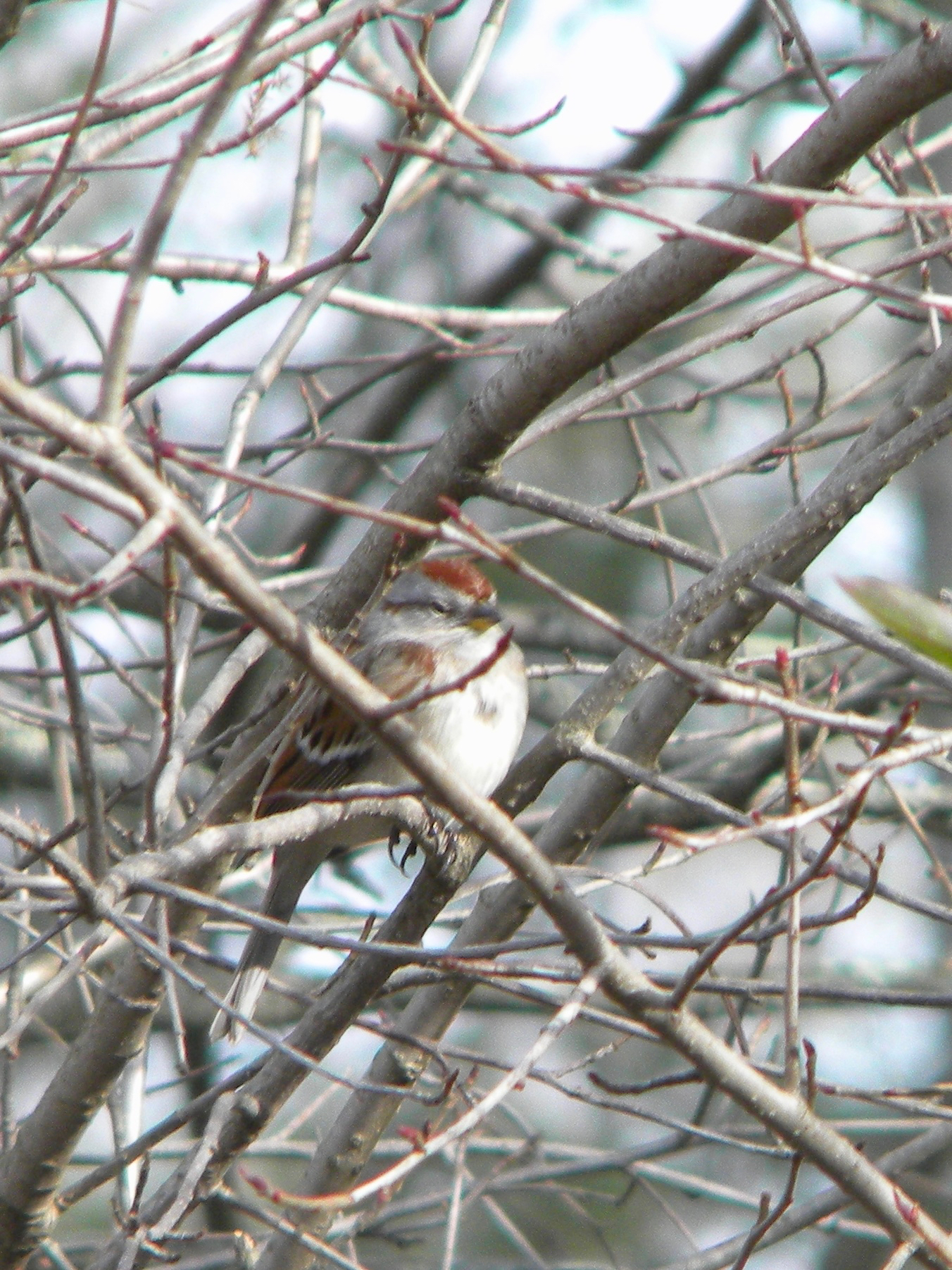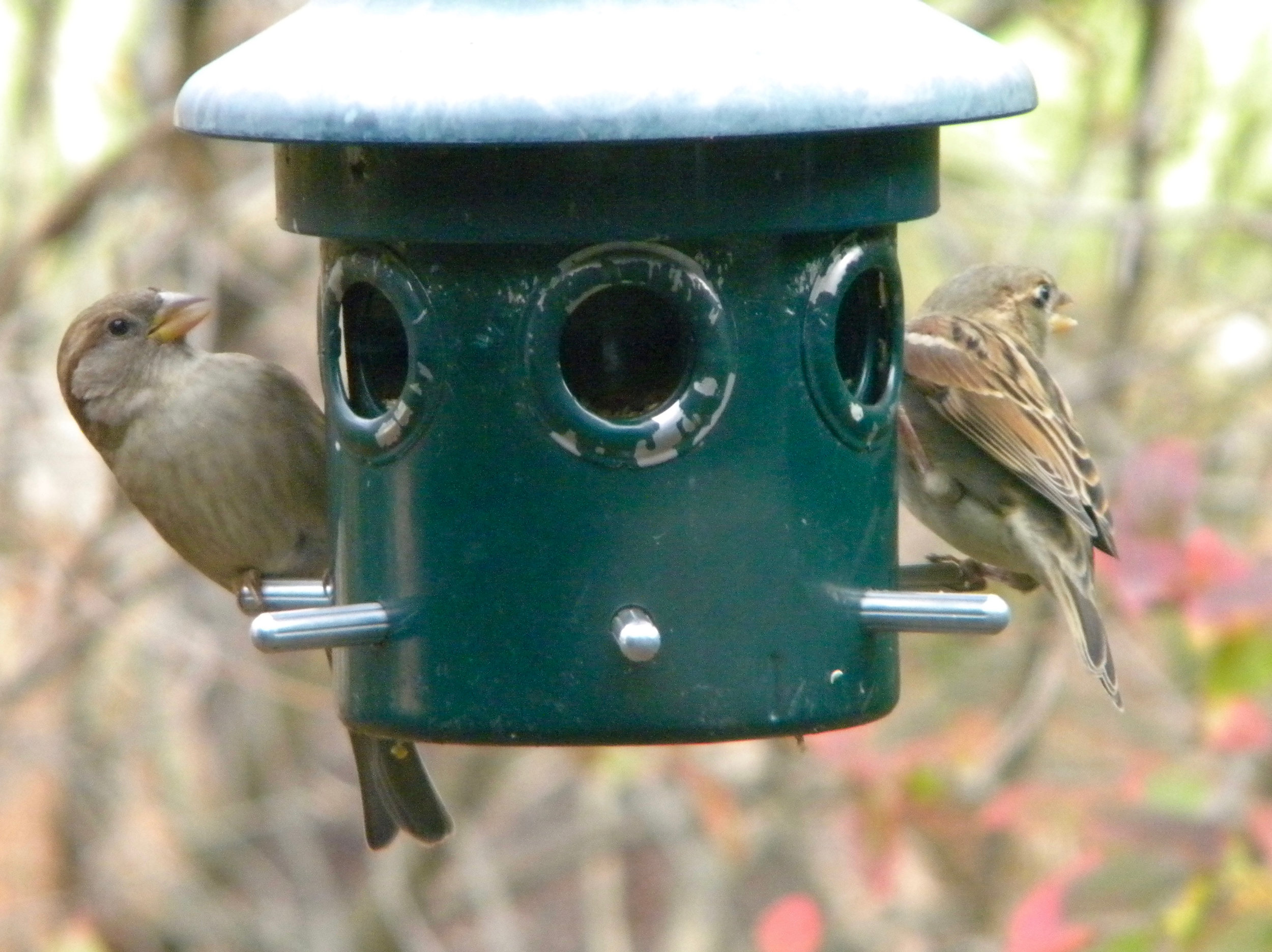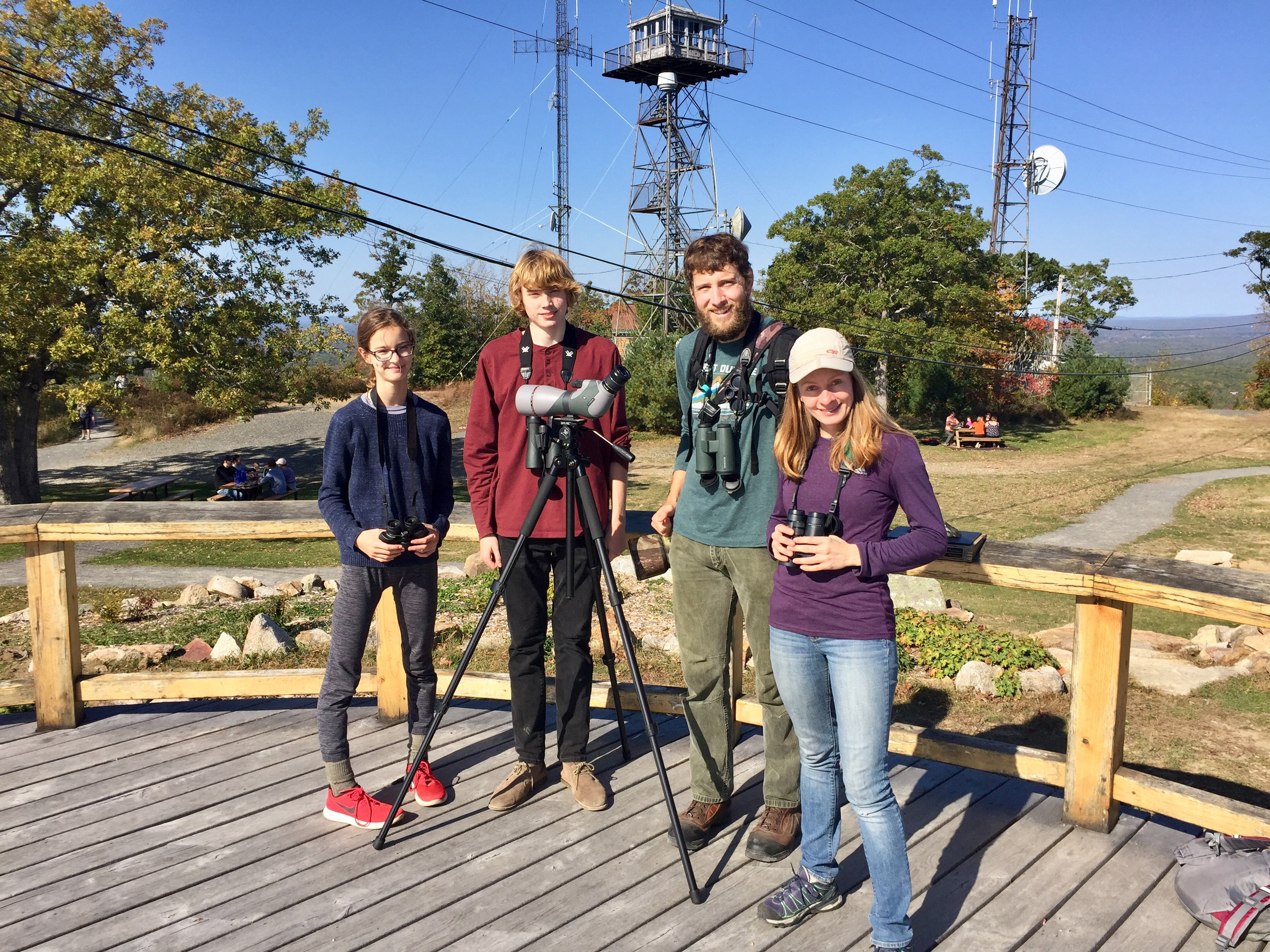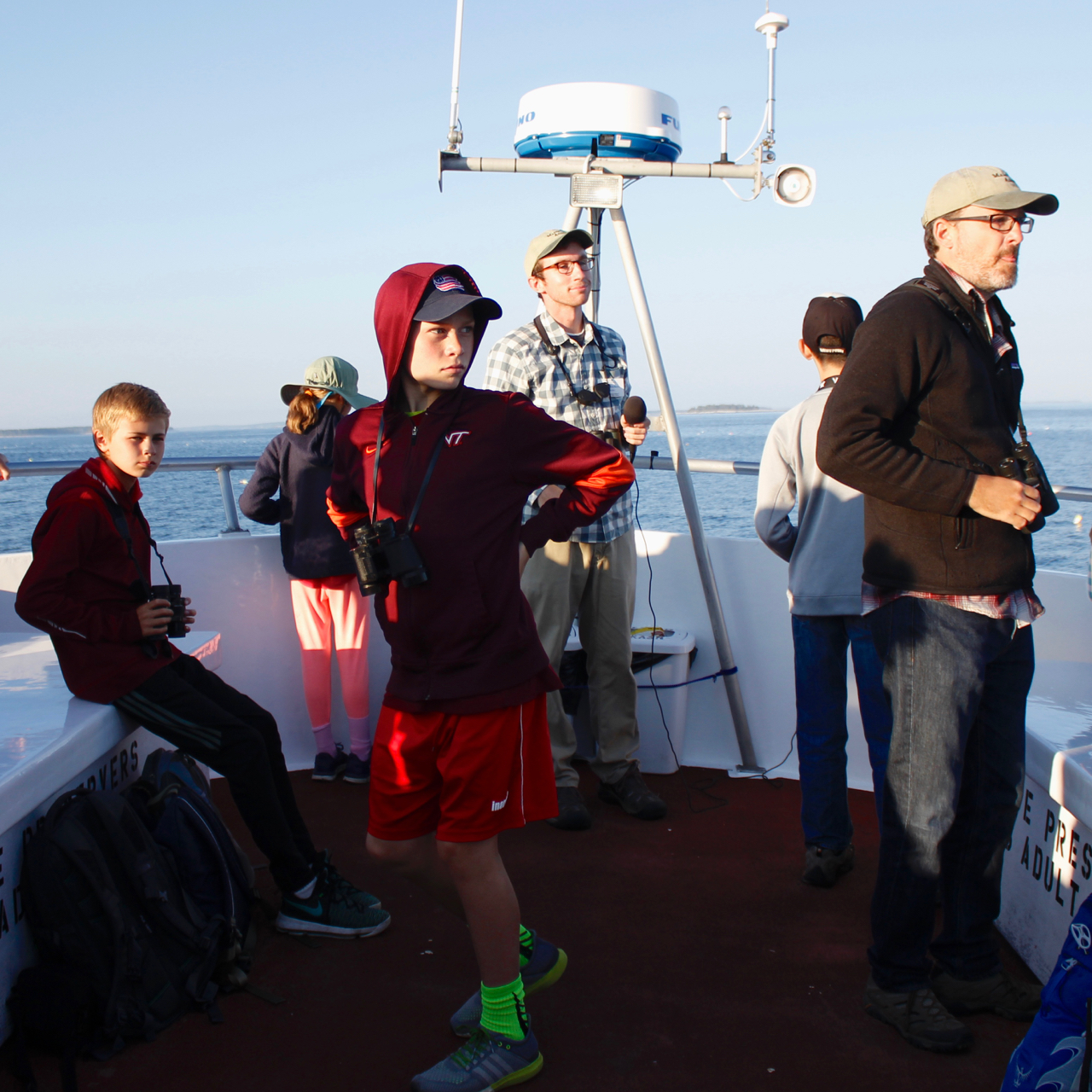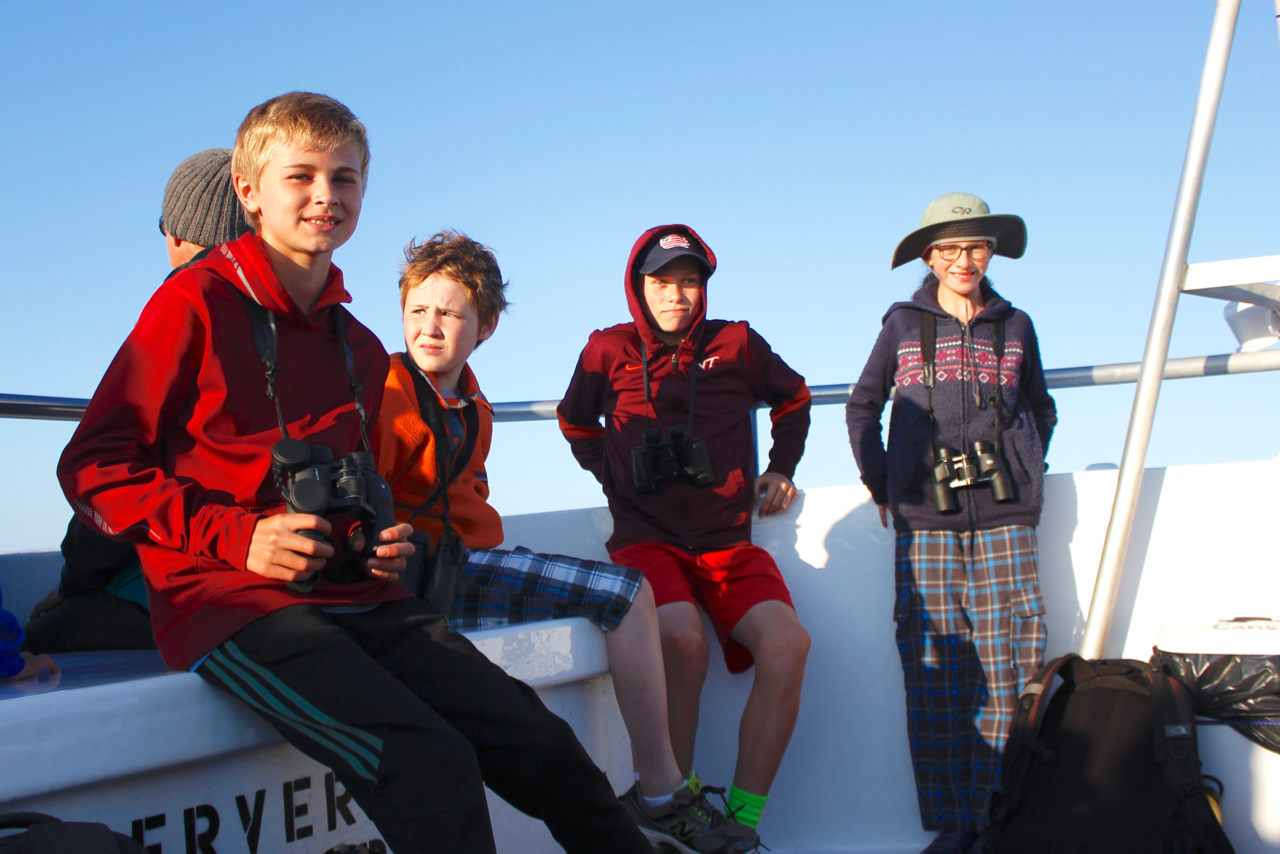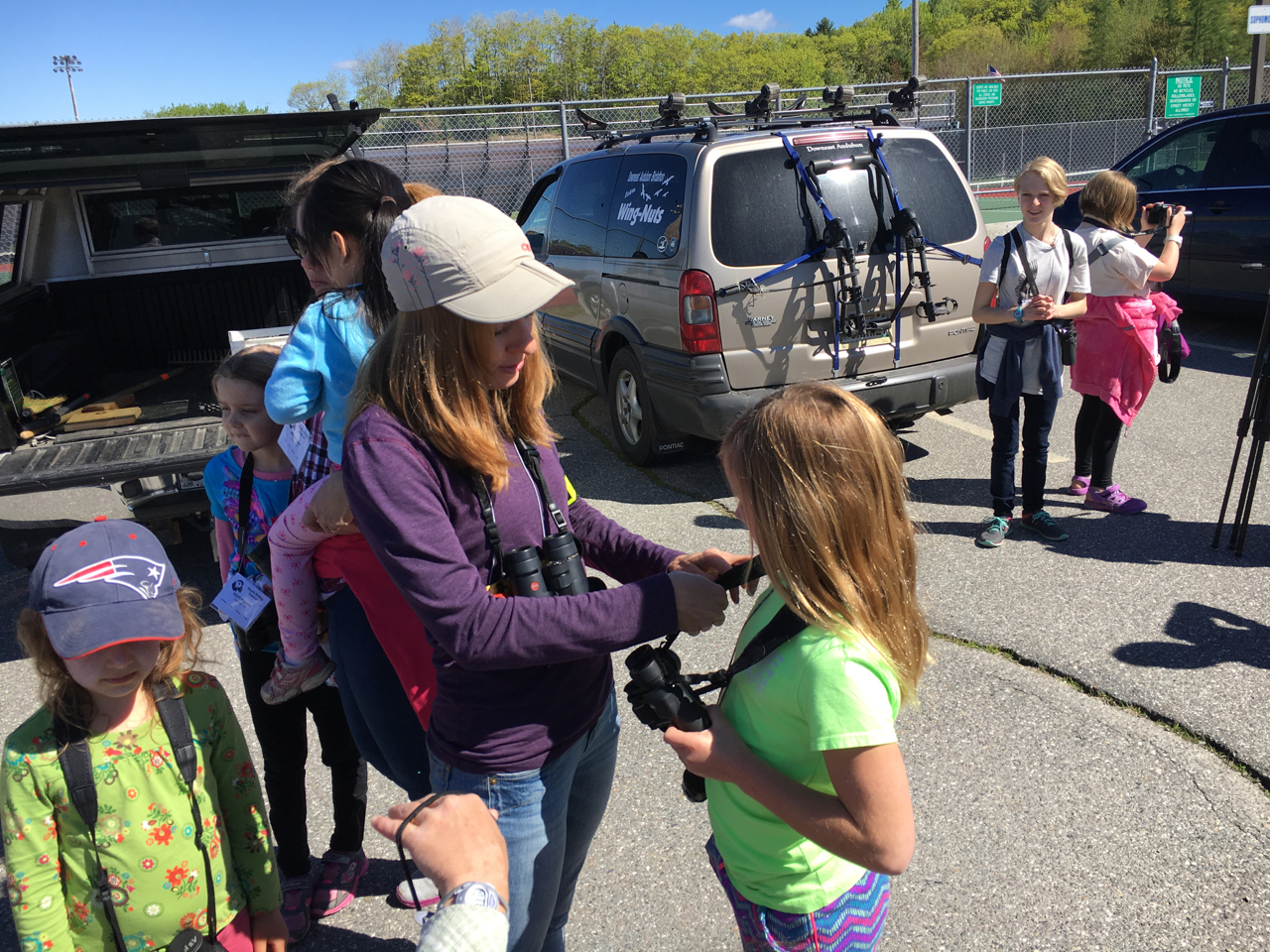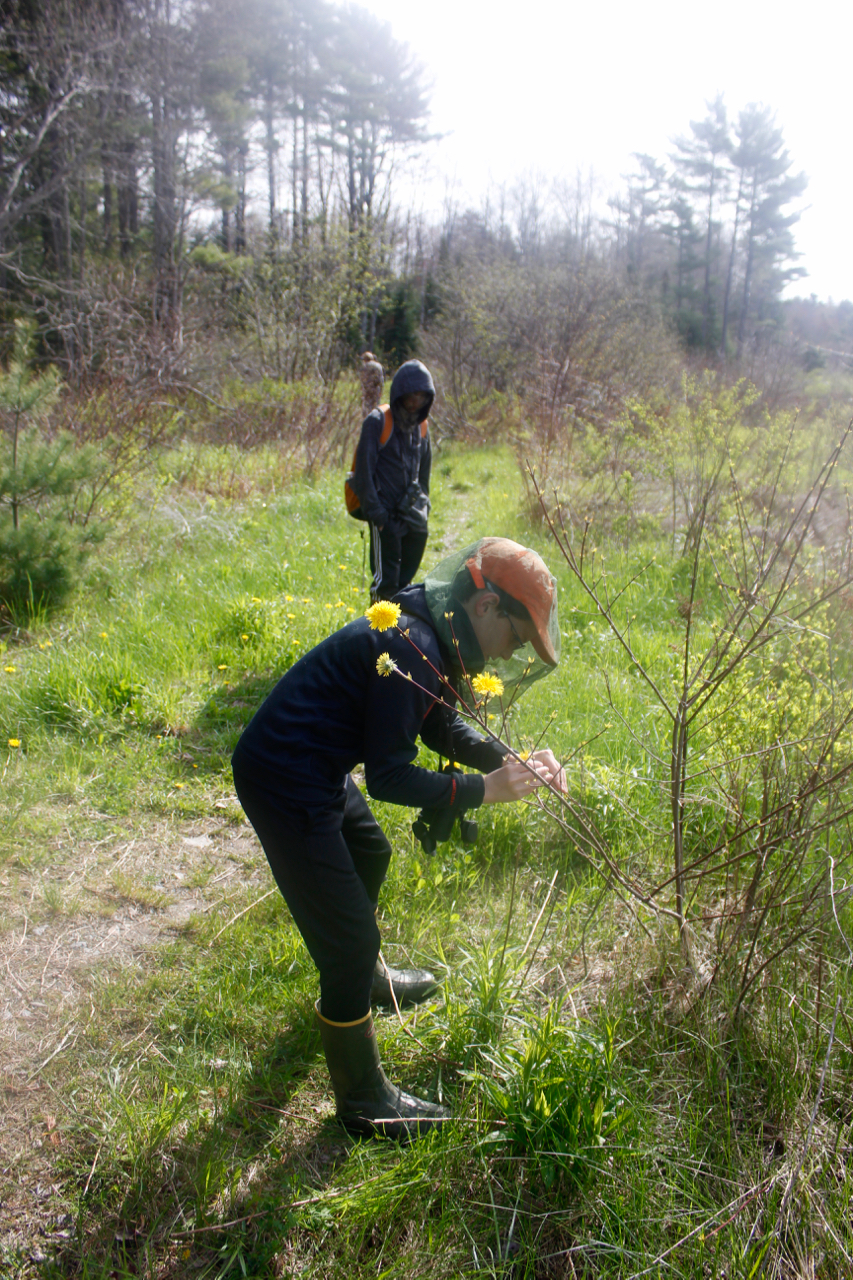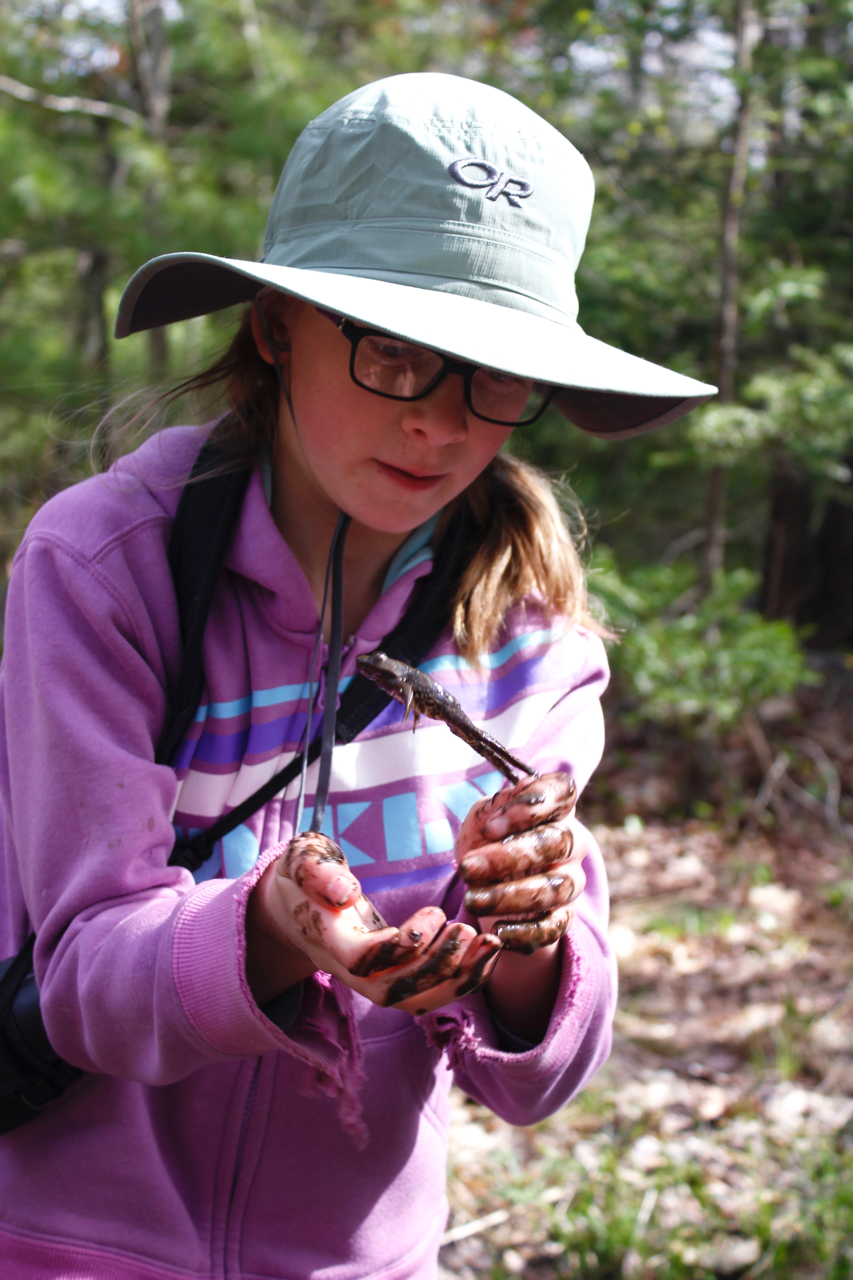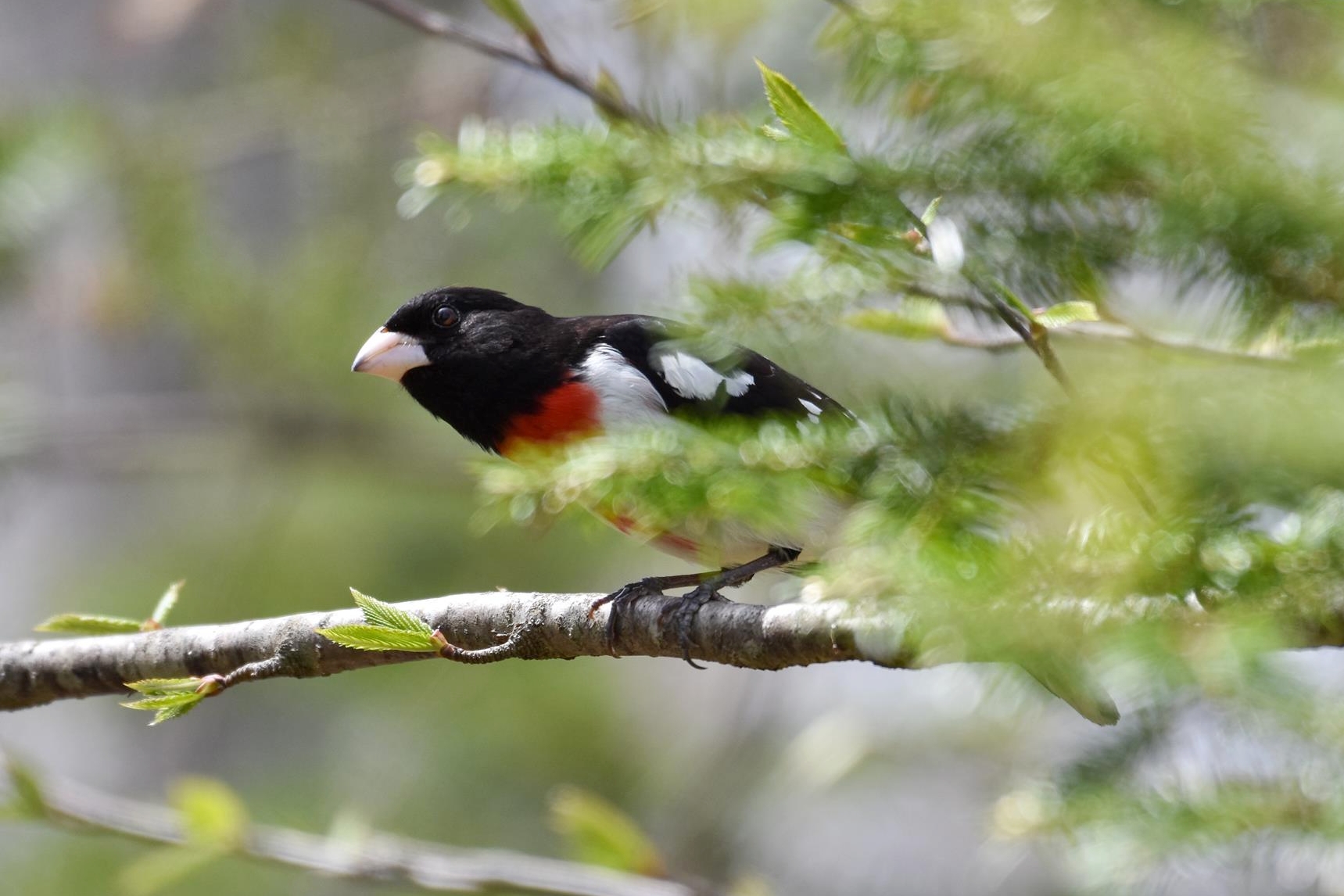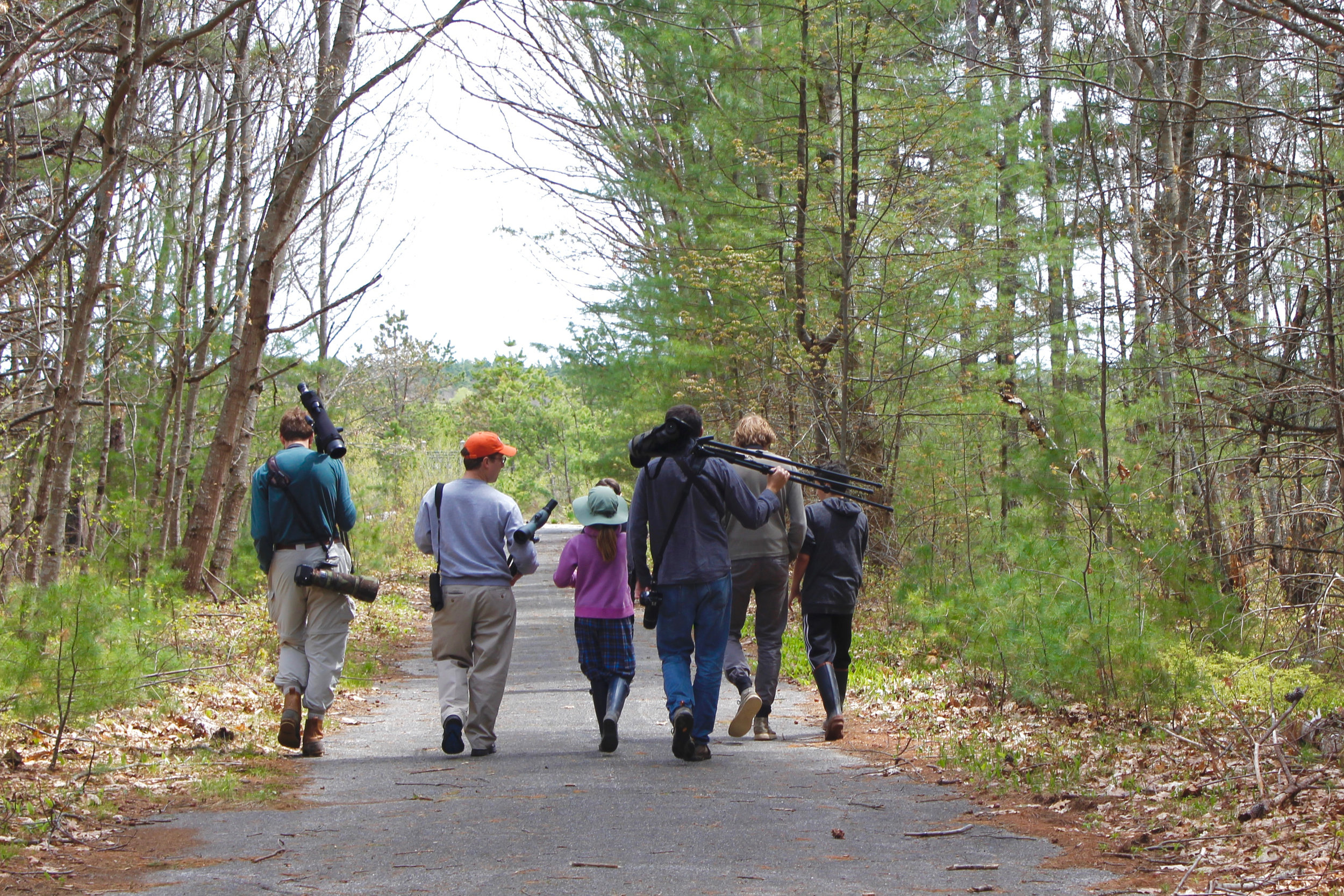By Lena Moser
On Sunday, November 12, five intrepid young birders gathered at the headquarters of Maine Audubon at Gilsland Farm on a very chilly (20-degree!) morning. We were joined by Jeremy Cluchey (Maine Audubon Communications Director) and Ari van den Akker (Staff Photographer). Jeremy and Ari will be writing an article about the MYBC, which is due to be published in the March 2018 newsletter Habitat. We are excited that word is spreading about MYBC!
We were also joined by Maine Audubon's Staff Naturalist and birder-extraordinaire, Doug Hitchcox. He made this trip especially great thanks to his birding expertise, thorough knowledge of the local habitats, and sincere willingness to share his enthusiasm, time, and energy with our group.
We started our bird walk at the pond, where we measured the thickness of pond ice and looked for muskrat dens along the banks. On our way to West Meadow, we spotted a distant group of crows harassing a hawk. Doug helped us identify it: Rough-legged Hawk! This was a lifer for most in the group, so we were thrilled to get scope looks at this uncommon visitor from the arctic. Also, a flock of a dozen Red-winged Blackbirds flew over our heads, and we briefly heard a flyover Snow Bunting, too.
Most of our time was spent at the Presumpscot River Estuary, where we scanned the river and examined the ducks on the water. We saw large rafts of Common Goldeneye, Red-breasted Merganser, and Bufflehead, along with a few Common Eiders, Mallards, and American Black Ducks. Doug spotted a Red-throated Loon and Lesser Scaup for us (the latter was great to compare to the female goldeneyes around it). Ian kept trying to find a Barrow's Goldeneye in the group, and lo and behold, after some time, Doug says, "I have a Barrow's!" The strange thing is that it didn't look like a typical Barrows. The more we observed this bird, the more we noted how odd it was. Its head was peaked and had a bright purple sheen to it. Instead of a thin, white crescent on its face, it had a blobby triangle. The bird also lacked the black "spur" of plumage on the sides of the upper chest, and its upper body looked very white... much like the surrounding Common Goldeneyes. It only had thin lines of black across its wings. Very strange. Turns out this was a Common X Barrow's Goldeneye hybrid! We all thought this was very cool, though sadly it could not be added to our life lists because a hybrid does not count as a full species. We will have to start a new hybrid list instead!
To warm ourselves, we took shelter from the cold in the Maine Audubon headquarters building, where we observed Black-capped Chickadees, American Tree Sparrows, and three species of rodents (Gray Squirrel, Red Squirrel, and Eastern Chipmunk) up-close and personal as they came to the feeders outside the Discovery Room. We also took a stab at a bird face ID quiz, which was a fun challenge!
Continuing on, we walked from the Audubon center through a grove of Eastern Hemlocks, where we learned about the invasive wooly adelgid that's decimating hemlocks in the Northeast. We searched for owls roosting in the hemlocks but found a couple of squirrel nests instead ;). From there, we walked to the Community Garden and around back to the parking area along the road. We saw two Northern Flickers, a couple of aggressive Northern Mockingbirds chasing each other, and a Red-tailed Hawk circling overhead.
Overall, we are so happy we endured the cold and got to have such a great experience visiting the headquarters of Maine Audubon! Thanks again to Jeremy and Ari for accompanying us in order to write a story about our club. Also huge thanks to Doug Hitchcox for giving us so much of his time this morning.. your leadership and deep love of birding were inspiring and much appreciated by our group!
Young birders tackle a bird ID quiz at the Maine Audubon headquarters at Gilsland Farm, Falmouth. Video by Doug Hitchcox.








